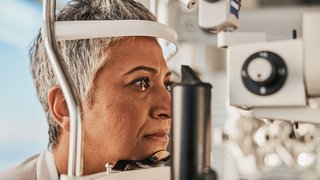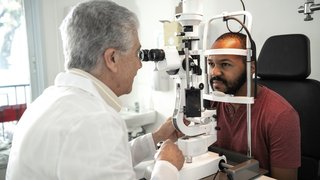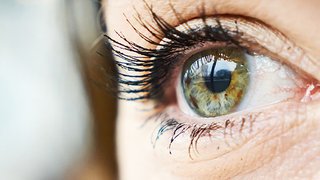Total eclipse for the smart: Enjoy solar show and protect your eyes
March 14, 2024
On April 8, 2024, North Texas will be in the national spotlight for its lack of light.
Dallas is the largest major city in the U.S. in the path of totality for the upcoming total solar eclipse – the first of its kind visible from here since 1878. At 1:40 p.m. on April 8, the moon will move in front of the sun, totally blocking it and creating what looks like a big, black hole in the sky. The celestial spectacle will last nearly four minutes here, and millions of people are expected to be gazing at the ghostly glow.
Amid all the excitement, taking extra care to wear proper eye protection can be the difference between enjoying an indelible memory and risking permanent vision damage.
When we look directly at the sun, powerful ultraviolet (UV) rays are concentrated onto our retinas, the thin layers of tissue at the back of the eyes. During a total eclipse, there is less visible light, which means our irises widen and admit a harmful amount of UV light, making our eyes more susceptible to adverse effects.
Because there has been so much anticipation of the “Great North American Eclipse,” patients began reaching out to the UT Southwestern Department of Ophthalmology in February asking smart questions about how to view the eclipse while also protecting their eyes.
We’ve gathered answers to some of the top questions to help you prepare for this awe-inspiring event.

Who is most at risk of eye damage?
Anyone can sustain eye damage during an eclipse, but children are most at risk. Kids have clearer lenses than most adults, letting in more light and leading to quicker retinal scarring. Children are also more likely to give in to the excitement and look directly at the eclipse if left unsupervised. So, take extra precautions if you plan to view the eclipse with your children.
People with pre-existing retinal disease, such as macular degeneration, may already have damaged or deteriorating retinas. They are more vulnerable to losing additional vision from macular burns and scars that can result from looking at an eclipse without protective equipment.
Two of the most common conditions that can come from staring at an eclipse are:
Photokeratitis, which causes temporary damage to the outer layer of the cornea and causes it to slough and fall off, almost like skin peeling after a sunburn.
Solar retinopathy, also known as eclipse retinopathy, is permanent retinal damage caused by sun exposure. It can occur in just a few seconds of looking at the sun during an eclipse.
How can I safely view the eclipse?
There are plenty of ways to enjoy the solar eclipse without staring directly at the sun.
- Make a pinhole projector: This device made from household items uses a small hole to project an image of the sun onto a surface. Light from the sun passes through the hole and creates an inverted image of the moon crossing the sun’s path. See how to make one and use it safely.
- A safe viewing party near you: Your local museum, planetarium, or library may be hosting an official viewing party, such as these events at the Perot Museum of Nature and Science in Dallas and Fort Worth Museum of Science and History. Typically, these more formal events are accompanied by experts who will provide you with certified viewing devices and guide you through safe eclipse viewing.
- ISO 12312-2 certified glasses from a certified vendor are specially designed to manage UV light exposure to the retinas.
- Number 14 welder’s glasses also are safe for viewing the eclipse. However, other welder’s glasses and sunglasses, no matter how dark, are not sufficient.
- Browse NASA’s photo gallery: NASA publishes breathtaking pictures of almost every solar eclipse on their website and on social media.
I looked at the eclipse. Now what?
When the moon completely obscures the sun – the period known as totality – it is possible to view the eclipse directly without eye protection. But this is not advised since the moon is constantly moving, and bright sunlight can appear at any moment. Remember, it only takes a few seconds of viewing the sunlight to burn your macula, and once retina tissue is destroyed, it cannot regenerate.
If you or someone you know begins experiencing any of these symptoms after viewing the eclipse, see an ophthalmologist right away:
- Blurred vision
- Blind spots at the center of your field of vision
- Aversion to light
- Metamorphopsia (when straight lines appear bent or curved)
- Color-tinged vision
You may have symptoms within hours of looking at the eclipse, but additional symptoms may become noticeable in one to two weeks. Using advanced imaging and exams, UT Southwestern ophthalmologists can look deep into your eyes to detect damage and find the best treatment option.
The 2024 solar eclipse will be an awe-inspiring event, and Dallas is lucky to be in the path of totality. The next total solar eclipse visible from the contiguous United States won’t be until 2044 – and Texas won’t be in the path of totality for that one.
So, on April 8, 2024, look skyward – just make sure you’re wearing the proper eye protection.
To schedule an eye exam, call 214-645-2020 or request an appointment online.











